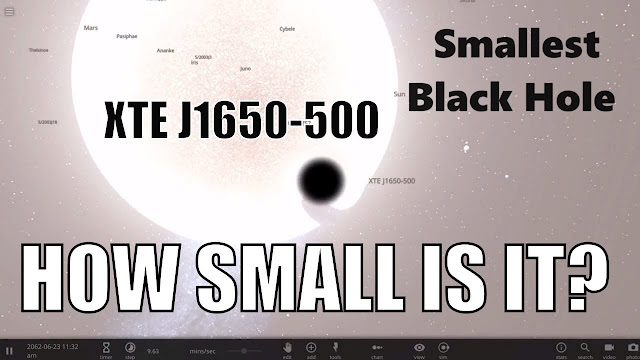The Smallest Black Hole in the Galaxy
Astronomers have uncovered the smallest black hole ever observed in the Milky Way, a discovery that sheds new light on the diversity of black holes and challenges long-held assumptions about their formation. Dubbed "The Unicorn", this diminutive black hole is an exceptional find, offering a rare glimpse into the lower limits of black hole masses.
Meet "The Unicorn"
Nicknamed for its unique characteristics and rarity, "The Unicorn" resides in the Milky Way, approximately 1,500 light-years away in the constellation Monoceros. It’s part of a binary system, paired with a red giant star.
Key Facts About "The Unicorn"
- Mass: Estimated to be about 3 solar masses (M☉), it is significantly lighter than typical stellar black holes, which usually exceed 5 M☉.
- Type: Classified as a stellar-mass black hole, formed from the collapse of a massive star.
- Detection Method: Identified through its gravitational effects on its companion star rather than direct observation, as it emits no light.
How Was "The Unicorn" Discovered?
Detecting small black holes is a challenge, as they don’t actively consume surrounding matter or emit detectable radiation. Instead, astronomers rely on indirect evidence, such as their gravitational influence.
Discovery Techniques
- Stellar Wobble: The red giant in the binary system exhibits a subtle wobble, indicating it is being pulled by an unseen, massive companion.
- Dimming and Brightening: Variations in the red giant’s brightness, caused by tidal interactions with the black hole, provided further clues.
- Data Analysis: Scientists combined data from ground-based telescopes and observatories like TESS (Transiting Exoplanet Survey Satellite) to confirm the black hole’s presence.
Why Is "The Unicorn" Significant?
1. Breaking the "Mass Gap"
"The Unicorn" sits near the theoretical mass gap between the heaviest neutron stars (around 2.5 M☉) and the lightest black holes (5 M☉). This discovery challenges the notion that black holes below 5 M☉ cannot form.
2. Insights into Black Hole Formation
Its small size suggests alternative pathways for black hole formation, possibly through low-energy supernovae or direct collapse without a massive explosion.
3. Testing Theories of Stellar Evolution
Studying "The Unicorn" helps refine models of how stars evolve and collapse, particularly in cases where mass loss plays a critical role.
Challenges in Detecting Small Black Holes
Smaller black holes are inherently harder to find due to their weak gravitational influence and lack of accretion disks (the glowing material spiraling into many black holes). Unlike larger black holes actively feeding on matter, "The Unicorn" interacts primarily through its gravitational pull.
Potential Undetected Population
Discovering "The Unicorn" raises the possibility that many small black holes could be hiding in binary systems, waiting to be revealed through improved detection techniques.
Implications of the Discovery
Expanding the Known Black Hole Population
Small black holes may be more common than previously thought, but they remain underrepresented in current catalogs.Astrophysical Models
Refining models of black hole formation and neutron star collapse could lead to better predictions about the distribution of compact objects in the galaxy.Gravitational Wave Observations
The discovery of small black holes enhances our understanding of the types of mergers that could produce gravitational waves detectable by observatories like LIGO and Virgo.
Future Research Directions
More Comprehensive Surveys
Large-scale surveys using next-generation telescopes, such as the James Webb Space Telescope (JWST) and the European Extremely Large Telescope (ELT), will search for similar objects.Binary System Analysis
Astronomers will continue studying binary star systems for signs of small black holes, focusing on those with unexplained orbital dynamics.Gravitational Wave Catalog Expansion
Smaller black holes might contribute to gravitational wave events, providing more opportunities for detection and analysis.
Conclusion
The discovery of "The Unicorn" represents a milestone in black hole research, revealing a previously hidden population of small stellar-mass black holes. By studying these compact objects, astronomers are uncovering the full spectrum of black hole masses and deepening our understanding of the universe’s most enigmatic phenomena.
Hashtags
#SmallestBlackHole #TheUnicorn #BlackHoleDiscovery #MilkyWay #Astrophysics #StellarEvolution #BinarySystem #MassGap
Keywords
Smallest black hole, The Unicorn, stellar-mass black hole, binary system, gravitational influence, mass gap, black hole formation, red giant, astrophysics, gravitational waves.

No comments:
Post a Comment